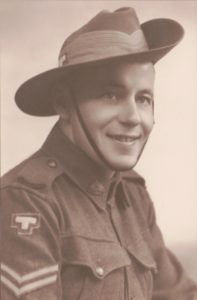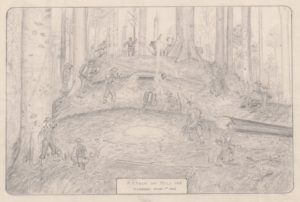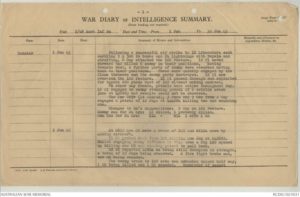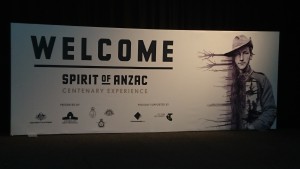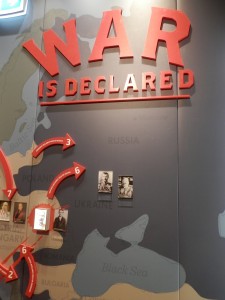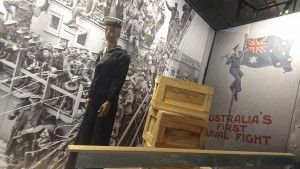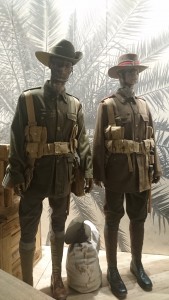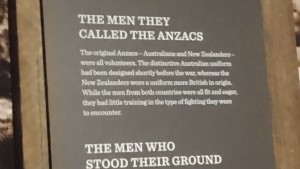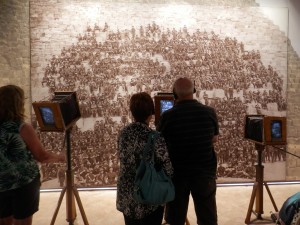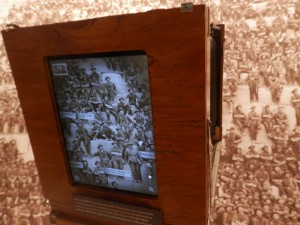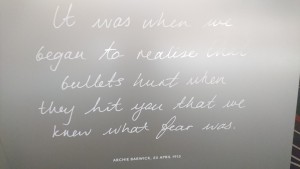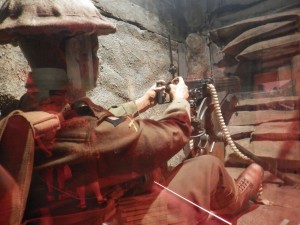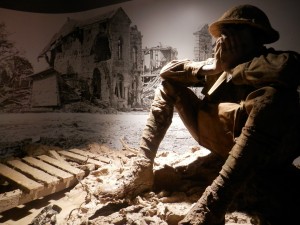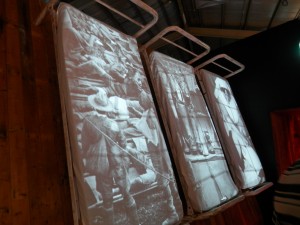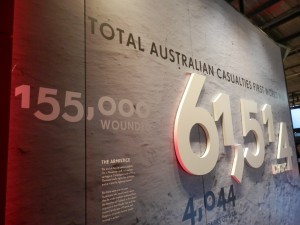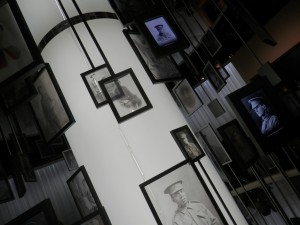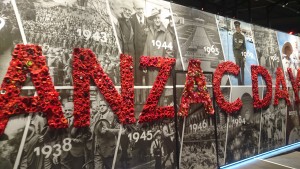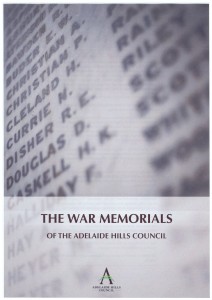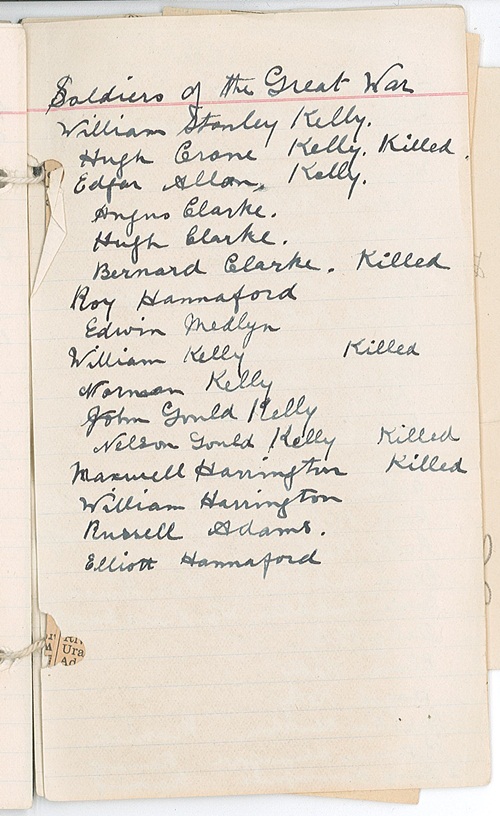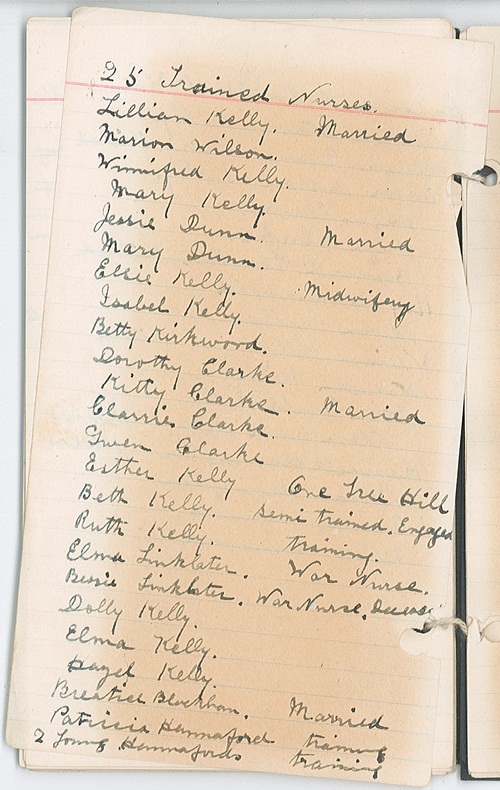Remembering Tarakan, 1 June 1945
Anzac Day, a day of remembrance of those who fought and died for our country. Whether they lived or died, nothing was ever the same again for those who went, as well as those at home.
For today’s Anzac Day post, I looked at those from my own family who were involved in war – there have been many over the years in the various wars, but this times I’ve chosen to write about Harold Roy Winter, my grandma’s brother who was involved in World War 2.
I’ll start off by saying that the military knows him as “Roy Harold Winter”, rather than “Harold Roy Winter”, simply (or so the story goes) as there was another person already signed up with that name so he switched it, so for this purpose I’ll go with the military version.
Born in Victoria, he grew up in Adelaide, and signed up as a young 25 year old ready to fight for his country. He was assigned to the 2/48th Battalion Australian Infantry Battalion, and got to see to world … and war!
Reading through the letters he wrote to family while he was in the army, he describes going overseas as a great adventure, as well as describing the monotony of army life. He also writes about the strength of the hospital staff …
“The efficiency, determination and sacrifices to their job are a magnificent credit to them, and only we who have experienced it can give a true value to their worth. In many cases, patients were being attended by orderlies who were just as ill, or in some cases even worse. Such is to the spirit of the A.I.F. and it will keep all of us going till we die or win through.”
But it was a sketch that he drew of a battle scene that I wanted to highlight today.
Captioned: Attack on Hill 102, Tarakan, June 1st 1945, I wanted to know more about this, so I headed to the Australian War Memorial’s website, and looked up their Battalion War Diaries which you can find online now. Found the one for the 2/48th Battalion, scrolled through to find the page relating to 1 June 1945 … and bingo!
The entry for 1 June 1945, says the following …Date: 1 Jun to 30 Jun 45
Place: Tarakan
Date: 1 Jun 45
Hour:
Summary of Events and Information:
Following a successful air strike by 18 Liberators each carrying 9 x 500 lb bombs and 24 Lightnings with Napalm and staffing, B Coy attacked the 102 feature. 12 Pl moved forward and killed 6 enemy in their positions. Moving back to their positions. These were quickly engaged by the flame throwers and the enemy party destroyed. 12 Pl now over-ran the 102 feature. 10 Pl passed through and exploited for approx 200 yards West of 102 without making contact.On other coy fronts, patrols were active throughout day. 16 Pl engaged an enemy standing patrol of 6 astride creek jun at 436683 but results could not be observed. The Pnr Offr (Lt SIMPER), 4 Pnrs and 9 ORs from A Coy engaged a patrol of 12 Jays at 444684 killing two and wounding one.
Changed to Bn’s dispositions: B Coy on 102 Feature.
Enemy cas for 24 hrs: 12 killed, 1 probably killed.
Own cas for 24 hrs: KIA -, WIA 1 offr 1 ORpage 1, from the Unit 2/48 AIB,War Diary, 1-30 June 1945 [AWM, ref: RCDIG1023631]
[click for a larger image]
Roy was there. He saw this happen. He saw the action, and he drew it. And this precious WW2 momento is still in the family.
After five years of travelling to various parts of the world fighting as a proud Australian, and surviving several gunshot wounds and other illnesses, Roy returned home to his wife, Vera in South Australia and settled into life after war. No doubt his injuries took their toll, as he died relatively young, at age 58, and is buried at Cheltenham Cemetery in South Australia.
Vera and Roy never had any children, so they don’t have any direct relatives, and Roy died before I was born so I never knew my great uncle, but despite that I wanted pay tribute to him.
Lest We Forget
My “Spirit of Anzac” Centenary Experience
The “Spirit of Anzac” Centenary Experience arrived in Adelaide, and what an experience it was.
The exhibition gives viewers a “once-in-a-lifetime” opportunity to walk through various recreated World War 1 environments (via sound, audio, images, and in some cases figurines on sets) featuring more than 200 artefacts.
You walk through “rooms” at your own pace, and are given stories and details of the various events and campaign via the audio headphones that you are given at the beginning of the tour. Generally it takes attendees anywhere from 1-2 hours to makes their way through. There really is a lot to see.
This travelling exhibition which is transported from place-to-place on 10 semitrailers has been on the road since September 2015, and has already visited Albury/Wodonga, Launceston, Hobart, Ballarat, Bendigo, Wollongong, and Melbourne. With Adelaide only having a few more days left.
After Adelaide the tour heads to:
Tamworth – Apr/May 2016
Toowoomba – May 2016
Brisbane – Jun 2016
Mackay – Jul 2016
Cairns – Aug 2016
Townsville – Sep 2016
Darwin – Oct 2016
Port Augusta – Nov 2016
Perth – Nov/Dec 2016
Bunbury – Jan 2017
Kalgoorlie – Jan/Feb 2017
Geelong – Feb 2017
Orange – Mar 2017
Newcastle – Mar 2017
Sydney – Apr 2017
Entry is free, but bookings are required, and you can do so on their Spirit of Anzac website www.spiritofanzac.gov.au.
First, here’s a short behind-the-scene video of the Spirit of Anzac Centenary Experience, which will give you an idea of the work that’s gone into creating this exhibition.
And here’s just a few photos from my visit today …
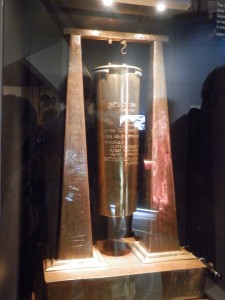
the last shell the Australian gunners fired at Anzac before evacuating, then converted into a mess room dinner gong
If you get a chance, go and see it. It will give you more of an understanding on what our ancestors went through.
www.spiritofanzac.gov.au
“War Memorials of the Adelaide Hills” Book
The Adelaide Hills Council was fortunate to obtain a grant through the South Australian Government’s “Anzac Day Commemoration Fund“. For this they nominated that the funds would be used towards “research and preservation of Honour Board Memorials of Adelaide Hills”, and to “engage with schools and local groups to locate and research honour boards for inclusion in the publication War Memorials of the Adelaide Hills”.
To commemorate Anzac 2015, a publication “War Memorials of the Adelaide Hills” was produced which details information about the war memorials throughout the Adelaide Hills in the towns covered by the Council, giving town name with details of the monuments.
A second edition of “War Memorials of the Adelaide Hills”, that will also include additional material and corrections that have been made by the community will also be produced, and released in due course.
The Council also have a separate project to research, photograph and record details on all the honour boards in the Council area. While the majority of the honour boards can be found in local RSLs, community halls and schools, others have found their way to more obscure locations. The lack of detail of honour boards made it difficult to provide a comprehensive account of the memorials within the Council area. The aim is for this one to be released as a book as well.
The Adelaide Hills Council covers a large area in the Hills region, and includes the towns: Aldgate, Aldgate Valley, Ashton, Balhannah, Basket Range, Birdwood, Bradbury, Bridgewater, Carey Gully, Castambul, Chain of Ponds, Charleston, Cherryville, Crafers, Crafers West, Cudlee Creek, Dorset Vale, Eagle on the Hill, Forest Range, Forreston, Greenhill, Gumeracha, Heathfield, Houghton, Humbug Scrub, Inglewood, Inverbrackie, Ironbank, Kenton Valley, Kersbrook, Lenswood, Lobethal, Longwood, Lower Hermitage, Marble Hill, Millbrook, Montacute, Mount George, Mount Lofty, Mount Torrens, Mylor, Norton Summit, Oakbank, Paracombe, Piccadilly, Rostrevor, Scott Creek, Stirling, Summertown, Teringie, Upper Hermitage, Upper Sturt, Uraidla, Verdun, Woodforde, and Woodside.
Can you help?
The Adelaide Hills Council believe that honour boards are another link in conserving our heritage and in the recognition of the sacrifice made by young men and women at times of war, and they are after your help. If you know the whereabouts of any honour boards within the district please let them know.
Contact Details
project convenor: Helen Smith
phone: (08) 8408 0400
email: mail@ahc.sa.gov.au
web: www.ahc.sa.gov.au
On the 11th hour, of the 11th day, of the 11th month …
For Remembrance Day this year I wanted to share with you a couple of pages from what is known as the “Kelly Diary”. And I am eternally grateful to not only have a copy of this diary, but also that the current keeper of this treasure has kindly allowed me to reproduce these pages here.
But first of, let me start by saying, no, these are not descendants from the Ned Kelly line in Ireland, but rather those from the Isle of Man. Or should I say the line of William Kelly born near Ramsey, Isle of Man in 1804 to be a tad more specific – since the Kelly name is like Smith in the region.
The ‘diary’, and I write it in quotes because it is not strictly a diary, was written by Elise Marcia Kelly of Joslin in South Australia in late 1938. In this 34 page booklet she not only writes the lineage history from William Kelly (born 1804), together with information on the big 100 year reunion that was held in 1938, but also details of those who were involved in World War 1. And it is these pages I am sharing with you today.

